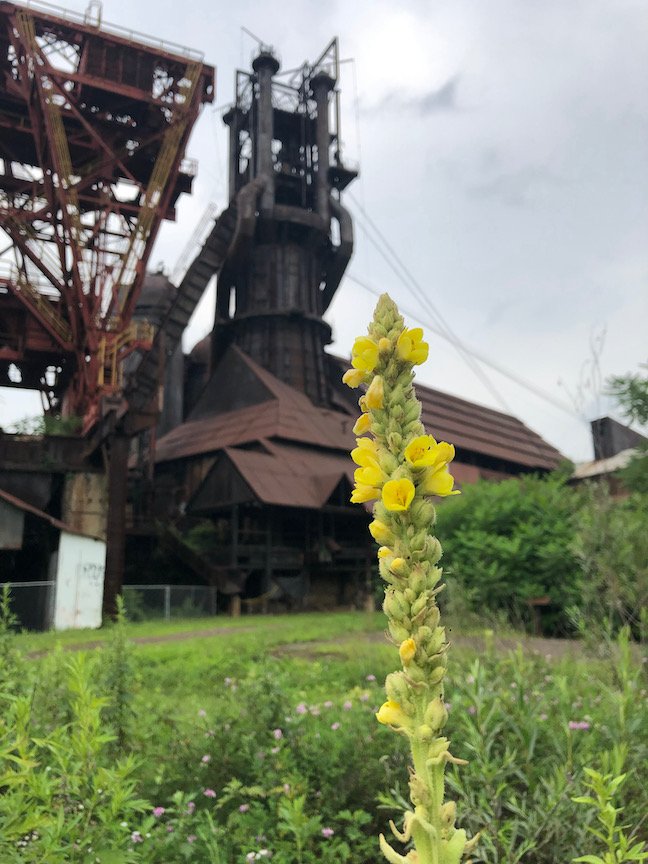Garden Restores Once Scarred Landscape at the Carrie Blast Furnaces in Pittsburgh
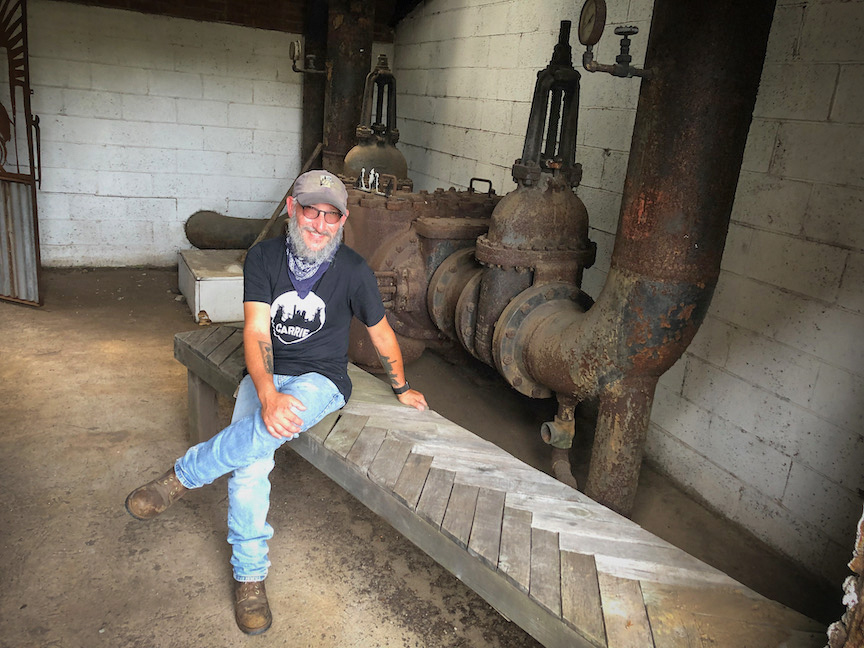
Ron Baraff is director of historic resources and facilities at the Carrie Blast Furnaces National Historic Landmark managed by Rivers of Steel in Rankin, Pa. He wears many hats at the site and was a big part of creating the Iron Garden. Photos by Doug Oster

By Doug Oster
July 28, 2021
Startled Mourning Doves quickly take flight, their wings whistling into the brush along the trail through the Iron Garden, part of the Carrie Blast Furnaces National Historic Landmark, managed by Rivers of Steel in Rankin, Pa.
They are followed by a high-flying flock of sparrows who retreat into the thick cover of sycamore trees, the birds start to sing sweetly to each other.
Grasshoppers leap to safety and fat bumblebees feast on the pretty purple flowers of knapweed, all in the shadow of a 93-foot tall, black industrial monolith.
This is one of Pittsburgh’s hidden treasures and certainly one of its most unique gardens.
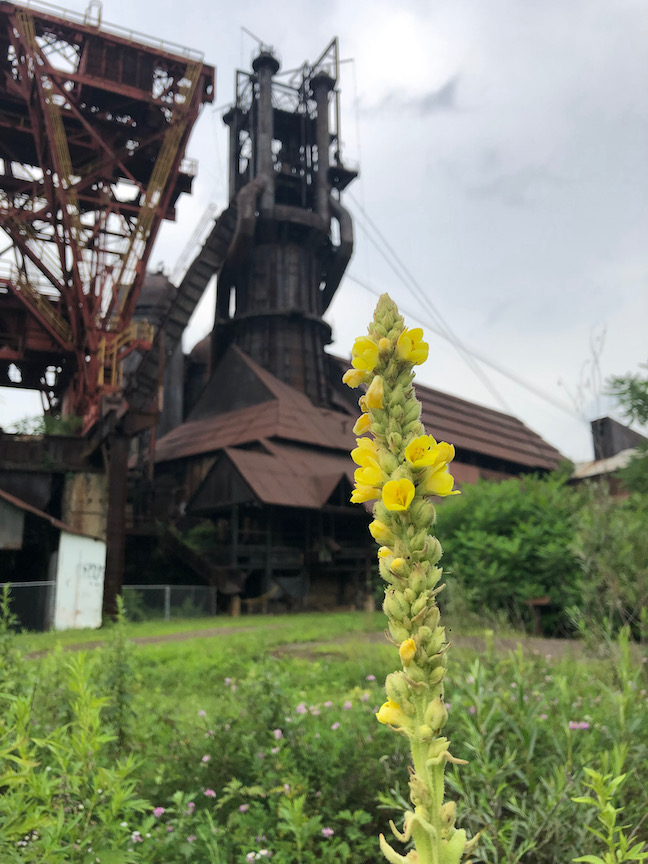
Verbascum blooms in the shadow of one of the Carrie Furnaces.
Ron Baraff is director of historic resources and facilities here and has been a major force in its evolution since the official designation in 2010 and long before. There’s something unique about the combination of brick and steel next to this little oasis under the shuttered furnace.
“That juxtaposition of the rusting structures and this heavy industry along with the beauty of the garden and the birds coming back is one thing that makes this place special,” he says.
To escape the heat of the day, we found refuge in an old auxiliary pumping room to talk about the genesis of the garden.
The Iron Garden was originally covered by another blast furnace and the outbuildings which accompany such a structure. When they were demolished decades ago all that was left was rubble, rebar and concrete.
“Honestly, the area that is the garden was problematic for us,” says Baraff. “Because there was so much debris there, we’d take a tractor in there and destroy the tractor. We destroyed brush hogs so we just left it.”
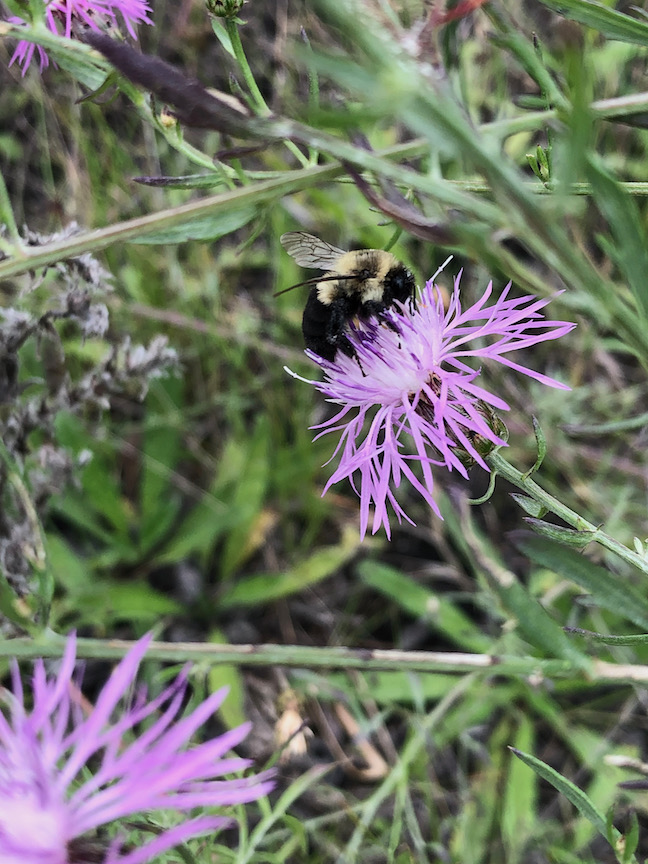
A bee enjoys knapweed in the Iron Garden.
Over time, plants reclaimed the space.
“Nature is crazy resilient,” he says, “and stronger than we’ll ever be. We had trees growing up and brush growing up. Because we left it, we actually chanced upon something that has become a very unique area,” he added proudly.
It was a chance encounter with famed garden writer, photographer and landscape ethicist Rick Darke, that changed the course of the space. He was doing work with Fallingwater, flying over Pittsburgh in a helicopter with Ann Talarek, Fallingwater’s horticulturist and asked her, “what is that?”, while flying over the Carrie Furnace site.
She explained, he was fascinated and a meeting was set. As Baraff took him through the site, Darke explained his vision of the garden.
“If you’re going to do a pathway, make sure it meanders,” he told Baraff. “It gets people to slow down. We should do this great reveal because that’s the amazing thing here.”
This reveal happens three-quarters of the way through the trail, which opens up to a circular area of grass with strategically placed huge stones, salvaged from the old Hot Metal Bridge that crossed the Monongahela river when the furnace was in its prime. They offer a perfect place to sit and listen to the sounds of nature while marveling and the huge blast furnace.
“My favorite time to be here is on a Sunday morning,” Baraff remarks, “when no one else is here. My God — a place that was so loud, so overwhelming, now was so quiet, so serene and absolutely beautiful.”
He’ll come with his beloved German shepherds, who will run the trail and lay in the shade under the mottled bark of sycamore and other trees.
“To see the life coming back and the landscape healing itself, it never ceases to be amazing to me,” he adds.
Tall, light grey spires of verbascum are covered in yellow flowers. The small, daisy-like fleabane blooms are accompanied by the aforementioned knapweed. Dark red sumac blossoms are held high on their branches. This garden is ephemeral in every way, changing week to week, providing something different for visitors.
Don’t expect formal borders filled with annuals, this is a wild garden that is beautiful in its own way.
When helping to design the garden, Darke went to the top of blast furnace number six and directed Baraff and his team on where the path should go and the seating area too.
“What Rick kept driving home with me is the fact that he’s had many clients that have spent millions of dollars to create what we already have, said Baraff.
There are unique placards through the garden which blossomed from a collaborative effort between Baraff, Darke, Addy and Josh Reiman, Carnegie Mellon University (CMU) sculpture department and the Hunt Institute for Botanic Documentation.
Addy is a landscape architect and master gardener who wanted to help, her husband Josh was then a professor teaching sculpture at CMU who felt likewise. The iron signs were cast on-site and use illustrations from the Hunt. The iron signs are the perfect complement for everything which surrounds the landscape.
“What I really love about the garden,” Baraff says, “It’s an opportunity for people to slow it all down and take in the beauty that is this natural world around us, understand its past but see where it can go and the possibilities that are there. We’re just scratching the surface of what we can do here.”
The Carrie Furnace site offers guided tours of the furnaces, offering a first-hand look at the history of steel in Pittsburgh. It’s also about art, as there is a graffiti art program too. Many walls are covered in colorful artwork.
One of the most incredible and famous pieces of art is the Carrie Deer. This huge, industrial salvage artwork began covertly in 1997 by a group of artists and was kept in place when the blast furnace was given its historic landmark status.
Television shows and major movie studios work here often. The new “A League of Their Own” series for Netflix was coming to film the day after our interview.
It’s all under Baraff’s umbrella and when asked if he has time to visit the garden very often with all his responsibilities. He laughs and replies, “I’m the guy who mows it. I love it.”
He then reflects on his time spent in a garden he helped create.
“It really is the most peaceful place on this site. It’s a nice respite,” he says, his voice echoing in the little pump room.
“Man scarred this landscape, but nature is healing it. It is a testament to the strength, beauty and diversity of nature.”
For tours and other information go to the Carrie Furnace website.

The placards in the Iron Garden were created by a collaboration of people.
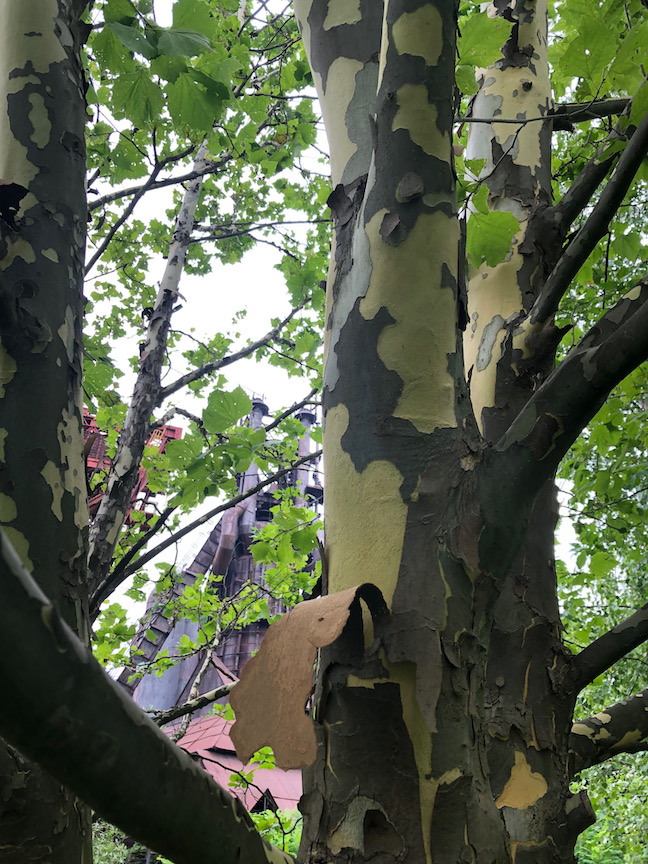
The Carrie Blast Furnace can be seen behind the mottled bark of a sycamore tree in the Iron Garden.
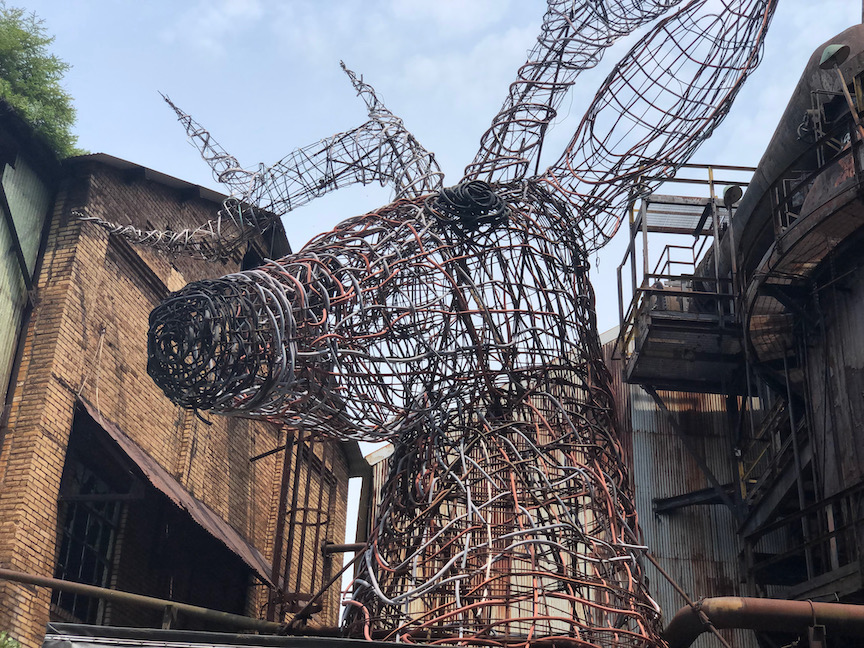
The Carrie Deer is the most famous art piece on the site.
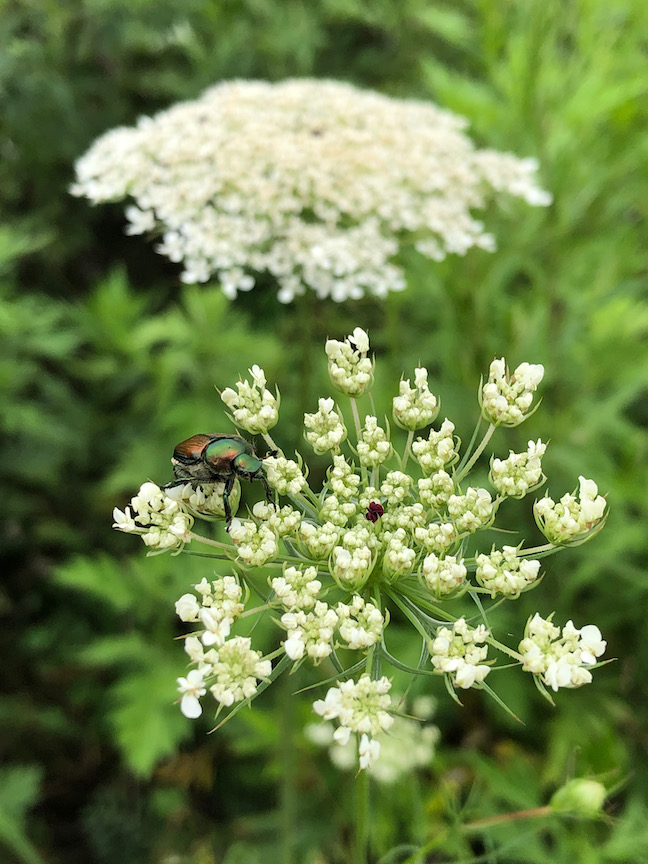
Queen Anne’s lace is a great pollinator plant in the Iron Garden.


